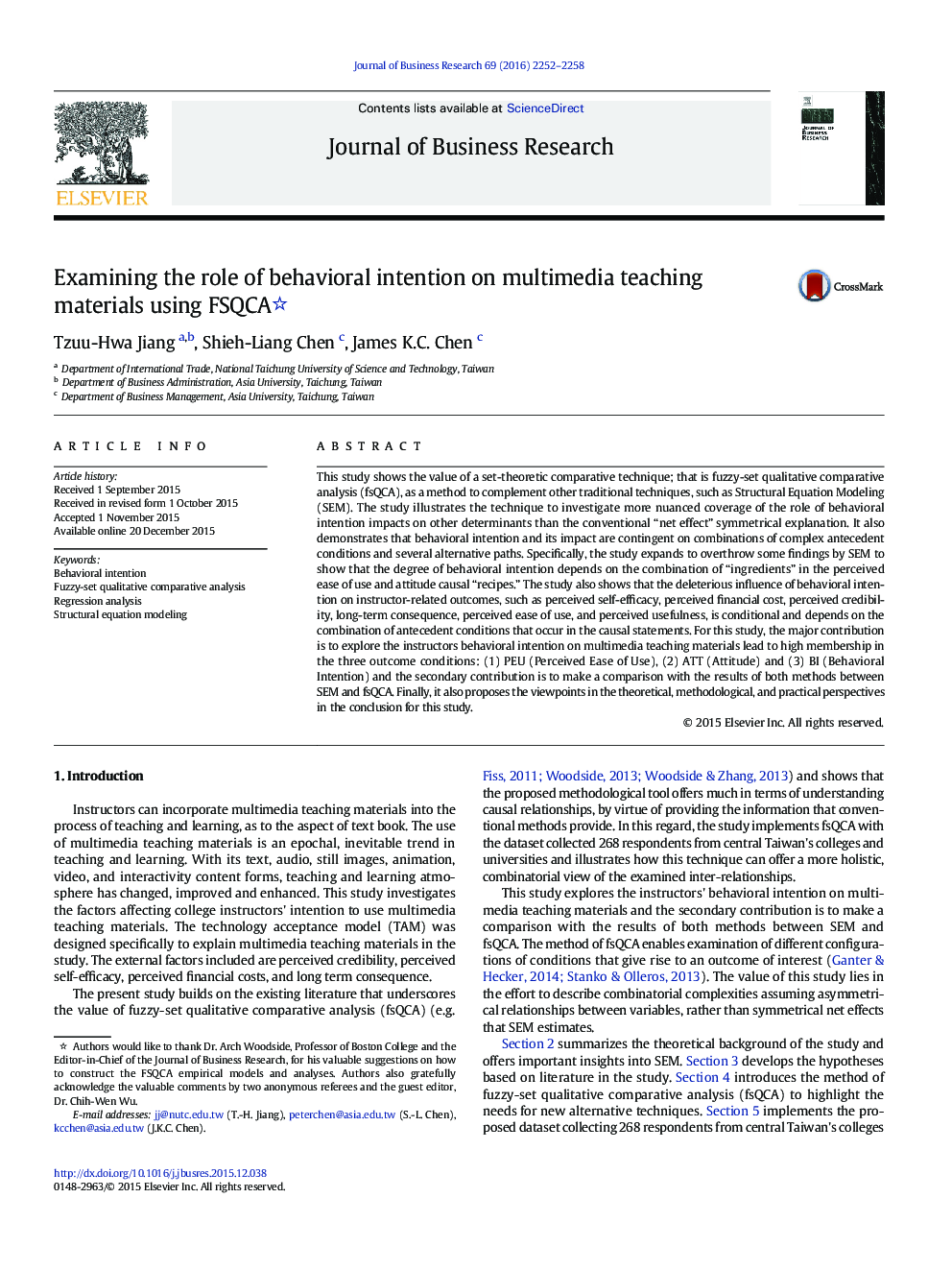| Article ID | Journal | Published Year | Pages | File Type |
|---|---|---|---|---|
| 1016960 | Journal of Business Research | 2016 | 7 Pages |
This study shows the value of a set-theoretic comparative technique; that is fuzzy-set qualitative comparative analysis (fsQCA), as a method to complement other traditional techniques, such as Structural Equation Modeling (SEM). The study illustrates the technique to investigate more nuanced coverage of the role of behavioral intention impacts on other determinants than the conventional “net effect” symmetrical explanation. It also demonstrates that behavioral intention and its impact are contingent on combinations of complex antecedent conditions and several alternative paths. Specifically, the study expands to overthrow some findings by SEM to show that the degree of behavioral intention depends on the combination of “ingredients” in the perceived ease of use and attitude causal “recipes.” The study also shows that the deleterious influence of behavioral intention on instructor-related outcomes, such as perceived self-efficacy, perceived financial cost, perceived credibility, long-term consequence, perceived ease of use, and perceived usefulness, is conditional and depends on the combination of antecedent conditions that occur in the causal statements. For this study, the major contribution is to explore the instructors behavioral intention on multimedia teaching materials lead to high membership in the three outcome conditions: (1) PEU (Perceived Ease of Use), (2) ATT (Attitude) and (3) BI (Behavioral Intention) and the secondary contribution is to make a comparison with the results of both methods between SEM and fsQCA. Finally, it also proposes the viewpoints in the theoretical, methodological, and practical perspectives in the conclusion for this study.
